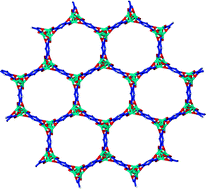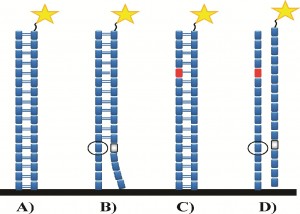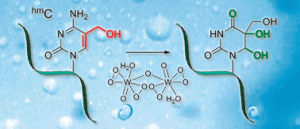A simple red-to-purple colour change test could detect food or drinks contaminated with phthalates, say Chinese scientists.
Phthalates are used as plasticisers in some types of plastic food packaging; however, due to their toxicity, there are strict rules to prevent them leaching into food or drinks, or being used directly as food additives. In spite of this, there have been several recent scandals where phthalates have entered the food chain.
The analytical test proposed by Bang-Ce Ye and his team from East China University of Science and Technology, Shanghai, uses gold nanoparticles modified with uridine 5′-triphosphate to detect the phthalates. In the presence of phthalates and Cu2+, the modified gold nanoparticles are cross-linked together with the phthalates, forming a bridge between different nanoparticles. The cross-linking reaction causes aggregation of the nanoparticles and the distinctive red-to-purple colour change.

The test can tell whether food or drink has been contaminated with toxic phthalates to levels of 0.5ppm, below the set safety limit of 1.5ppm
Read the full Chemistry World news story here
Link to journal Article
Rapid and sensitive colorimetric visualization of phthalates using UTP-modified gold nanoparticles cross-linked by copper(II)
Min Zhang, Yu-Qiang Liu and Bang-Ce Ye
Chem. Commun., 2011, DOI: 10.1039/c1cc14772b














 ….and did you know?….
….and did you know?…. Xenon is naturally present in very small amounts in the atmosphere but radioactive forms are released following nuclear detonations, reprocessing and explosions, such as the recent catastrophe at Fukushima Daiichi Nuclear Power Plant in Japan. Xenon is also used in a variety of other applications, from lighting to medical imaging, so capturing and separating it (from its sister noble gas krypton) is important for both commercial uses and atmospheric monitoring.
Xenon is naturally present in very small amounts in the atmosphere but radioactive forms are released following nuclear detonations, reprocessing and explosions, such as the recent catastrophe at Fukushima Daiichi Nuclear Power Plant in Japan. Xenon is also used in a variety of other applications, from lighting to medical imaging, so capturing and separating it (from its sister noble gas krypton) is important for both commercial uses and atmospheric monitoring.

